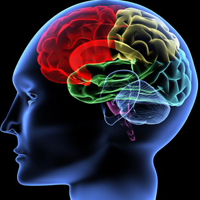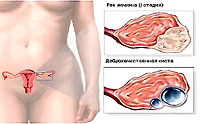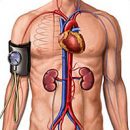For the treatment of brain tumors today, a number of methods apply. On these methods, as well as the diagnosis of brain tumors, you can learn from this article.
Content
 There are two strongly differing types of brain tumors - primary and secondary, and it is important to understand what they differ from each other. Primary brain tumors, which are rare, are born in the tissue of the brain itself and not very often form metastases.
There are two strongly differing types of brain tumors - primary and secondary, and it is important to understand what they differ from each other. Primary brain tumors, which are rare, are born in the tissue of the brain itself and not very often form metastases.
Secondary brain tumors, which are widespread much wider, proceed from other parts of the body (for example, light or breast), from which cancer cells are spread with the subsequent formation of new tumors in the brain. This difference is important, since the secondary tumor of the brain can influence the treatment methods applied about the primary cancer.
In general, the incidence of primary brain tumors is small.
Symptoms of primary and secondary brain tumors are the same. Often the first symptom is a strong and constant headache. It can be intensified with cough, chihannie or slopes, can lead to sleep impaired and do not serve until the morning. In many cases, it is accompanied by nausea and vomit. Frequent and strong headaches must serve as a sufficient basis for applying to the doctor; the likelihood that they are caused by a tumor is extremely small, but still it is advisable in such cases not to leave them without attention.
Other symptoms of brain tumors include confusion of consciousness and sometimes personality changes. Depending on the place of the defeat, disorders or impairment of vision, speech or equilibrium, as well as weakness on one side of the body.
Diagnosis of brain tumors
If the patient's brain tumor is suspected, they send a neuropathologist to a neuropathologist. The doctor primarily explores the nervous system.
If the doctor moderates the tumor, the scanning of the brain will be scanning or computed tomography, or a magnetic resonance image. These methods allow you to get a picture of the brain, which will help the doctor to detect the tumor and any swelling (swelling) around it.
If a tumor is visible on the scanogram and it is known about the presence of a primary cancer in another section of the body, the biopsy of the tumor will not need. However, if the primary lesion is not detected, it is necessary to take samples of the material of the tumor itself and explore them under the microscope for the formulation of the final diagnosis.
The biopsy of the brain tumor provides an extensive operation under general anesthesia. Depending on the localization of the tumor and the degree of complexity, the operation can be attempted to remove during this diagnostic procedure the entire tumor or most of it. If the tumor is not available for full removal, take only a testing sample.
Treatment with steroids
Since the brain tumor causes edema of the surrounding fabric, which in itself is the cause of many symptoms, to reduce swelling immediately after the diagnosis is very often used steroids. These are rapid effects, and most patients will soon be improved well-being, and many symptoms, including weakness in the limbs, weaken and even disappear. However, these funds do not have actions on the tumor itself.
Surgical interventions
If the tumor can be removed by surgical path, in the treatment of primary brain tumors, the operation is a method of choice. Sometimes surgical interventions are resorted to secondary tumors, when there is a single focus of lesion and metastases in the entire body in the brain. However, usually surgical operations for the treatment of secondary tumors do not conduct.
The tumor or, if possible, the largest part is excised, after which they impose a metal or plastic plate, replacing the part of the bone, and the skin flap is peeped on top.
Depending on the affected part of the brain and fabric, through which the surgeon should penetrate to achieve a tumor, a weakness or impaired brain function appear inevitably. Before surgery, the surgeon must inform the patient about its possible consequences.
Radiotherapy and chemotherapy
with brain tumors
 After surgery, they often resort to radiotherapy for influencing any malignant fabric, which could not be removed by surgical path, or any smallest accumulation of cancer cells that could remain after surgery.
After surgery, they often resort to radiotherapy for influencing any malignant fabric, which could not be removed by surgical path, or any smallest accumulation of cancer cells that could remain after surgery.
With secondary brain tumors, the whole head is usually irradiated with a lower dose, so very careful planning of the procedure, as a rule, is not required. Head irradiation leads to hair loss for several weeks. After the end of treatment, they usually grow. Other side effects are rarely observed.
Chemotherapeutic preparations are used to treat some primary brain tumors. The purpose of drug treatment is to reduce the tumor and controlling its growth, and not in curable. Chemotherapy is sometimes combined with radiotherapy, as it seems to improve the results of the latter. Along with chemotherapeutic agents, hormonal drugs can also be introduced, for example, tamoxifen, which increases the effectiveness of drug treatment.
Treatment is more effective when applying a comprehensive approach to treatment.
Some percentage of low-degree primary brain tumors are cured due to the combination of surgical interventions with radiotherapy. However, many patients with brain tumors treatment is carried out in order to weaken the symptoms and extension of life due to the maximum long-term control of the tumor process.









